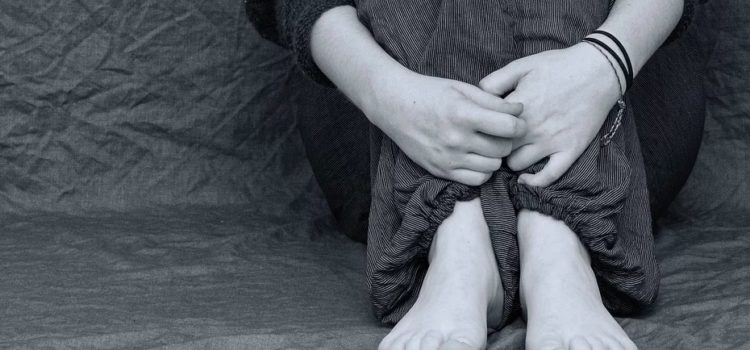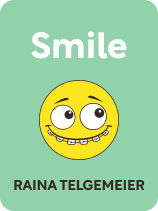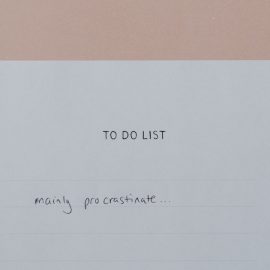

This article is an excerpt from the Shortform book guide to "Smile" by Raina Telgemeier. Shortform has the world's best summaries and analyses of books you should be reading.
Like this article? Sign up for a free trial here.
What’s the difference between teasing vs. bullying? What are some examples to explain the difference?
In comic artist Raina Telgemeier’s autobiographical novel Smile, she depicts the struggles of adolescence, including preoccupation with appearance and low self-esteem. Her novel shows how teasing can become bullying when Raina endures a difficult time in middle school.
Read on to learn more about teasing vs. bullying, based on the examples from Telgemeier’s Smile.
Teasing vs. Bullying: Examples From Smile
Think back to middle school: the mounds of homework, the excitement of crushes, and the changes of puberty. Imagine that on top of all of this, a face-first tumble onto the pavement has lodged your two front teeth higher into your mouth and you’ll need years of dental work to correct it. This is what happened to comic artist Raina Telgemeier, who recounts her middle school years in her autobiographical graphic novel, Smile. In this article, we’ll explore an example of teasing vs. bullying, based on Telgemeier’s real-life story of adolescence and self-consciousness in the novel.
Raina’s Experience in 6th Grade
To begin, Raina explains how she damages her two front teeth in 6th grade. X-rays reveal that her fall damaged the bones above her top row of teeth. As a result, her two front teeth are lodged high into her gums, making it look like those teeth are half the length of her others. Raina is devastated when she learns that she’ll need to make many more trips to the dentist to correct this problem.
Raina’s concerns about her stubby teeth prompt her to dwell on other aspects of her appearance. She expresses to her friends that she’s worried her stubby teeth make her look like a baby. One friend reassures her that her teeth don’t make her look like a baby—but her pigtails do. This makes Raina self-conscious about her hair. She decides to stop wearing it in pigtails so she can look older.
However, Raina’s newfound focus on her appearance isn’t all negative: She also becomes excited about looking older. For instance, she eagerly asks her parents if she can get her ears pierced. Her parents reply that piercing her ears can be her reward for getting braces.
Raina returns to the dentist to get braces that will not only correct her overbite but also hopefully pull down her two front teeth. Raina finds the experience painful, but her spirits lift when her mom rewards her by taking her to an ear-piercing parlor.
Moving on, we’ll explain how Raina’s friends begin to tease her, then we’ll explore how a psychologist explains the difference between teasing vs. bullying.
Raina’s Friends Tease Her
After Raina begins her new dental treatment in the second half of the year, her friends tease her about her appearance. On one occasion, she expresses to her friends that her braces make her look like a nerd—and her friends reply that she is a nerd and has always looked like one. Raina storms away, upset, and her friends remark that she can’t take a joke.
This teasing continues at Raina’s birthday sleepover. This time, her friends tease her by implying that she’s too unattractive to appeal to her new crush, Sean. They claim that she’ll appeal more to Sean if she improves her appearance. They give her a makeover, complete with garish makeup, revealing clothes, and ostentatious jewelry—then they hoot with laughter at her over-the-top look. When Raina becomes upset, her friends once again claim that she needs to lighten up—so, is this teasing or is it bullying? Below, we’ll examine Raina’s story of teasing vs. bullying from a psychologist’s point of view.
Teasing vs. Bullying
One reader may encounter these scenes in Telgemeier’s graphic novel and think that Raina’s friends are engaged in harmless, lighthearted teasing; another reader may read these same scenes and conclude that Raina is a victim of her friends’ mean-spirited bullying. How can you tell the difference between teasing vs. bullying?
Although it’s clear that her friends’ words and actions hurt Raina, it’s not entirely clear whether the onus is on Raina to lighten up, as her friends suggest—or whether the onus is on Raina’s friends to repair their harm and treat her better. Defining the distinction between teasing vs. bullying may clarify whether it’s Raina or her friends who need to change—as well as reveal how we can best handle real-life instances of teasing and bullying.
Psychologist Nancy Darling aims to clarify teasing vs. bullying by exploring the role of intentions and reactions. She claims that the intentions behind teasing are ambiguous. Some people engage in lighthearted teasing for a positive reason, such as showing that they know and accept the person they’re teasing. However, others engage in teasing to cause harm. Because the intentions behind teasing are ambiguous, the response of the person being teased determines whether the teasing is harmless or harmful. If they respond lightheartedly and don’t appear hurt, the teasing is harmless. If they appear hurt, it’s harmful—and the teaser is responsible for apologizing and ceasing their teasing.
By contrast, the intentions behind bullying are always negative—therefore, bullying is always harmful. For instance, a bully might intend to make themselves feel more powerful by belittling their victim. Their victim’s reaction doesn’t change the fact that their bullying is harmful. A victim may act unscathed, even though deep inside they feel hurt. Whether the victim shows they’re hurt or not, the bully is always responsible for apologizing and ceasing their bullying.
According to Darling’s two definitions, Raina’s friends subject her to harmful teasing. Their words and actions count as teasing (not bullying) because their intentions are harmless: to joke and have fun. Despite these intentions, Raina’s upset reaction indicates that the teasing is harmful. Therefore, the onus isn’t on Raina to lighten up, as her friends claim—the onus is on Raina’s friends to apologize and cease their teasing.

———End of Preview———
Like what you just read? Read the rest of the world's best book summary and analysis of Raina Telgemeier's "Smile" at Shortform.
Here's what you'll find in our full Smile summary:
- An autobiographical novel of one middle schooler's traumatic experience
- The self-consciousness that comes with having braces as a child
- Tips for parents whose children are struggling with coming of age






